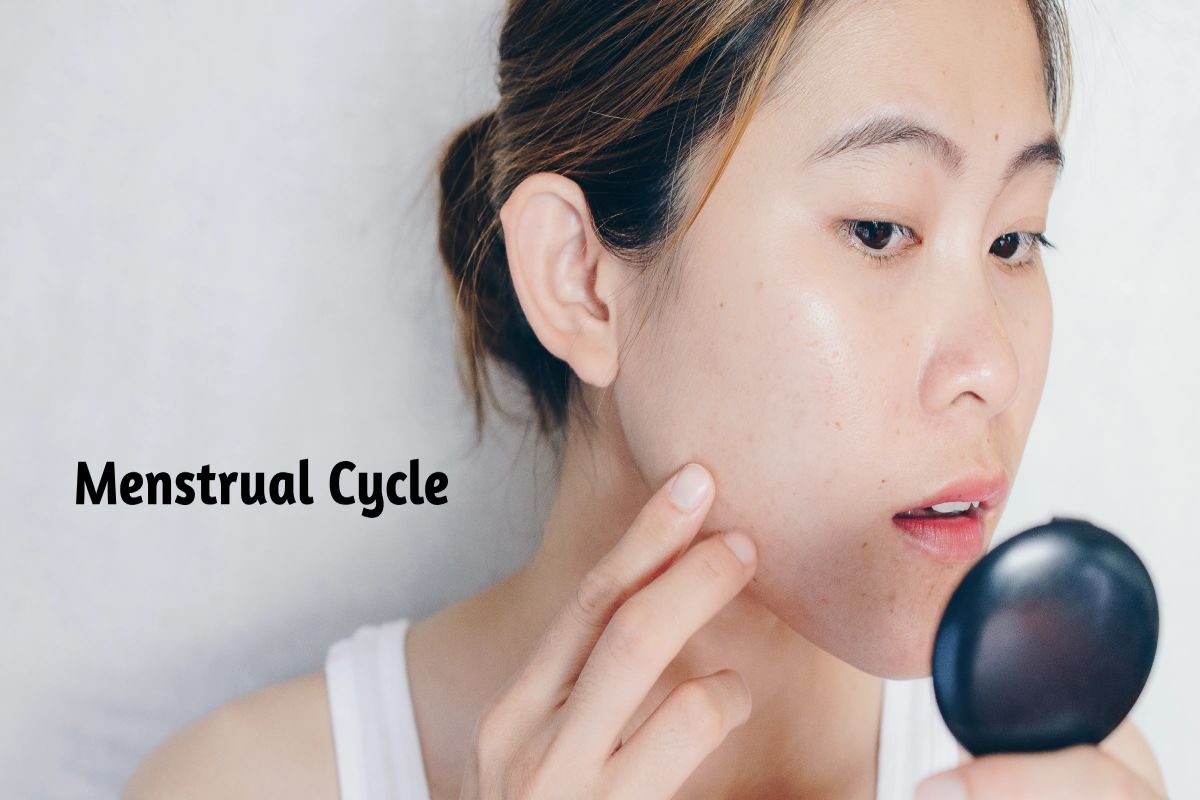The menstrual Cycle is also related to human skin. Some hormonal changes cause some changes in the skin. So in this article, we are to educate you on how to take care of your skin
Table of Contents
Hormones That Affect The Skin
The skin experiences several dry and oily stages in an average menstrual cycle due to the influence of different types of sex hormones. As a result, the skin will have more problems during the period and a couple of days before. So it is when pimples, spots, or acne can appear during menstrual. It is due to the accumulation of sebum under the surface, which gives the skin a greasy appearance.
If you want to know what hormone is responsible for oily skin, the answer is that it combines several hormones. Hormones that are out of equilibrium, such as progesterone, oestrogen, and testosterone, alter the oiliness and dryness of the skin.
During the menstrual cycle, oestrogen reaches its highest and lowest levels. It influences skin texture by affecting consistency, thickness, structural integrity, and fluid balance. Changes in hormone levels might result in acne during menstruation; progesterone is essential in this process. Progesterone induces skin outbreaks by blocking pores and increasing sebum collection under the skin’s surface.
Your Skin During Your Period
In the first days of the cycle, hormones such as estrogen and progesterone are low. It results in dry skin and a dull, matte appearance, making lines or wrinkles appear more. Moisturizing hygiene during your period will help protect your skin against bacteria and possible infections. Reams and drinking water help the skin in the first days of the cycle. Hygiene during
What Happens To Your Skin
In the original week of the menstrual cycle, estrogen levels, essential for the skin, are low. Therefore, apart from cleansing and moisturizing the skin, no further care is needed, and the skin should be in good general condition.
If your period skin problems are more severe than you think is normal, it’s best to see a dermatologist. There may be other hormonal problems to be aware of. A dermatologist may recommend tests if they feel the problem is not just related to the skin. He can also suggest a personalized list of skin care products, as well as the ingredients listed when purchasing skin care products.
Tips For Skin Care
If you suffer from skin problems related to hormonal imbalances, it is best to follow the advice of a dermatologist or skin care specialist. They will help you find the foods and skin care products that will help you achieve healthy, glowing skin. Here are some instructions to keep your skin beautiful and fit during the most challenging moments of the menstrual cycle:
Follicular Phase
During the follicular phase, estrogen levels gradually increase in the menstrual cycle’s first 10 to 16 days. You will feel an improvement in mood due to higher levels of serotonin. Your skin will feel good, and you will be less likely to suffer from other types of discomfort.
What Happens To Your Skin -Menstrual Cycle
As estrogen levels increase, you should notice a healthy glow by the ninth day of your menstrual cycle. Between days ten and thirteen of the process, estrogen levels will be at their highest.
Testosterone levels also begin to rise at this time. In addition, your skin will be rich in natural moisturizers and collagen, which makes it stronger and more elastic, so keep it simple, using only light moisturizers.
Tips For Skin Care -Menstrual Cycle
Your skin will be in its best disorder during the follicular phase. Your regular daily habits should be enough for your skin to receive the nutrients it needs.
Ovulation
The fourteenth day before your next period is the day you are ovulating. After that, your skin will look its best for the next five days until testosterone and estrogen levels decline.
Progesterone levels will rise, resulting in oilier skin—estrogen peaks during ovulation, giving your skin a healthy glow.
What Happens To Your Skin -Menstrual Cycle
The rise in luteinizing hormone makes the skin more sensitive to germs. Avoid wearing makeup to bed during ovulation, and pay more attention to hand hygiene to avoid transmitting germs to your face. It may result in more excellent period acne.
Luteal Phase – Menstrual Cycle
Premenstrual syndromes are also responsible for unpleasant changes in the skin. For some women, these fluctuations of hormone levels in the cycle are not a problem, while others need to organize their schedule and habits according to their menstrual cycle.
These dramatic skin changes during the menstrual cycle are due to hormonal imbalances that occur before, during, and a few days after the period.
What Happens To Your Skin
The products you use to take care of your skin should be lighter during the premenstrual period and the period. Focus on hydration and avoid layering products, especially if they are oil-based.
Before and during the period, you may notice your skin more oily and swelling in the whole body. It is due to water retention. Stay hydrated and eat more vegetables and foods that provide vitamins to your diet.
Skin Care Suggestions
The luteal phase starts when ovulation occurs in the second part of the cycle. Here are some ideas for skin care during the luteal phase:

